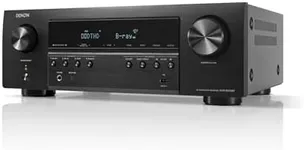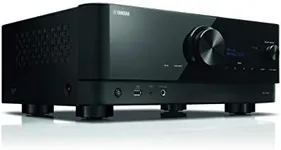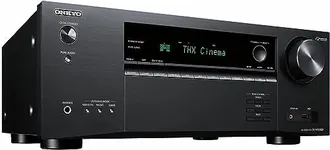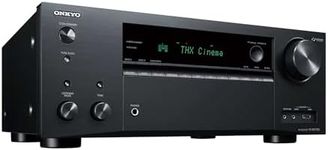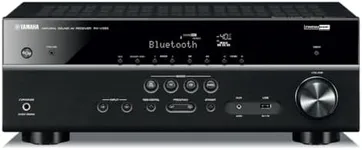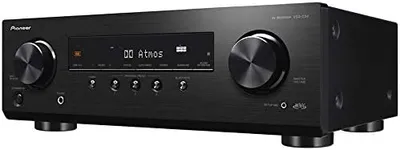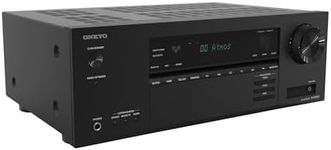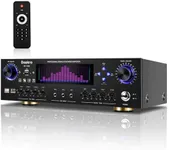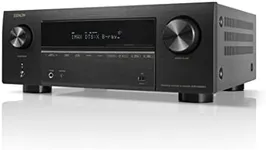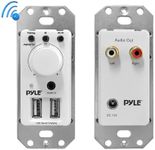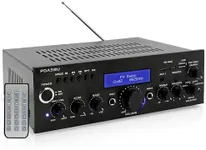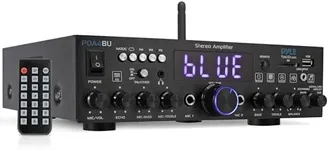Buying Guide for the Best Surround Sound Av Receivers
Choosing the right surround sound AV receiver can significantly enhance your home theater experience. An AV receiver acts as the central hub of your home audio system, processing audio and video signals and sending them to your speakers and display. To make an informed decision, it's important to understand the key specifications and how they align with your needs. Here are the main specs to consider when selecting a surround sound AV receiver.ChannelsChannels refer to the number of speakers the receiver can support. This is important because it determines the complexity and depth of your surround sound setup. Common configurations include 5.1 (five speakers and one subwoofer) and 7.1 (seven speakers and one subwoofer). If you have a smaller room or are just starting, a 5.1 system might be sufficient. For a more immersive experience, especially in larger rooms, a 7.1 or even 9.1 system could be better. Consider the size of your room and how many speakers you plan to install when choosing the number of channels.
Power OutputPower output, measured in watts per channel, indicates how much power the receiver can deliver to each speaker. This is crucial for determining the loudness and clarity of the sound. Lower power output (50-80 watts per channel) is generally adequate for smaller rooms or less demanding listening environments. Higher power output (100-150 watts per channel) is better for larger rooms or if you prefer listening at higher volumes. Think about your room size and listening habits to decide on the appropriate power output.
Audio FormatsAudio formats refer to the types of audio signals the receiver can decode and process, such as Dolby Atmos, DTS:X, and others. These formats are important for achieving high-quality, immersive sound. Basic receivers may support standard formats like Dolby Digital and DTS, which are sufficient for most users. However, if you want the latest in surround sound technology, look for receivers that support advanced formats like Dolby Atmos and DTS:X. Consider what types of content you will be watching and whether you want the latest audio technologies.
ConnectivityConnectivity options include the types and number of inputs and outputs available on the receiver, such as HDMI, optical, and coaxial ports. This is important for ensuring compatibility with your other devices like TVs, gaming consoles, and Blu-ray players. Basic receivers may have fewer HDMI inputs, which could be limiting if you have multiple devices. More advanced receivers offer numerous HDMI inputs, as well as wireless options like Bluetooth and Wi-Fi. Think about the devices you plan to connect and ensure the receiver has enough ports and the right types of connections.
Room CalibrationRoom calibration features automatically adjust the audio settings based on the acoustics of your room. This is important for optimizing sound quality without manual tweaking. Basic receivers may not include this feature, requiring you to adjust settings manually. More advanced models offer automatic calibration systems like Audyssey or YPAO, which can significantly enhance your listening experience. If you want the best sound quality with minimal effort, look for a receiver with a good room calibration system.
User Interface and Ease of UseThe user interface and ease of use refer to how simple it is to set up and operate the receiver. This is important for ensuring a smooth and enjoyable user experience. Basic models may have simpler interfaces but could lack advanced features. More advanced models often come with user-friendly interfaces, on-screen displays, and even smartphone apps for easier control. Consider your comfort level with technology and how much time you want to spend setting up and adjusting your receiver.


